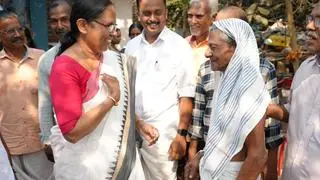The Voter Verifiable Paper Trail (VVPAT) system will be used on trial basis for the first time in the Nagaland by-elections to be held on September 4.
The VVPAT system is a new initiative of the Election Commission to ensure free and fair elections.
The VVPAT unit prints a ballot slip containing the serial number and symbol of the candidate when a vote is cast using the electronic voter machine (EVM).
The ballot slip is visible to the voter for about five seconds behind a ballot slip viewing window.
After this, the ballot slip is cut and it falls into a compartment.
In case there is a dispute about the voting and a petition is filed, the votes can be tallied electronically and physically with the ballot slips that fall into the compartment.
At present, EVMs are used for voting and counting is based on the results in the machines.
Physical verification
In comparison, the VVPAT will print a voter’s selection, thus also allowing for physically verification of the vote.
42 VVPAT – one which will be in use and another as a stand-by – will be used in the 21 election stations during the September 4 by-election. All the 12,000 registered voters in the constituency will be able to use the system.
The cost of each VVPAT, manufactured by Bharat Electronic Ltd and Electronics Corporation of India (ECIL), is estimated at about Rs 12,000.
To allow its use in the by-election, the Conduct of Elections Rules were amended and notified by the Election Commission on Friday.
Scaling up
Election Commission sources said depending on feedback from the electorate, including whether the use of VVPAT helped increase trust in the elections and how friendly its use was, a decision would be taken on whether it should be “gradually expanded in a graded and phased manner” throughout the country.
Using VVPAT throughout the country will require a lead time for manufacturing enough machines and an expenditure, which could be in the range of Rs 2,000-3,000 crore.
> ashwini.phadnis@thehindu.co.in






Comments
Comments have to be in English, and in full sentences. They cannot be abusive or personal. Please abide by our community guidelines for posting your comments.
We have migrated to a new commenting platform. If you are already a registered user of TheHindu Businessline and logged in, you may continue to engage with our articles. If you do not have an account please register and login to post comments. Users can access their older comments by logging into their accounts on Vuukle.